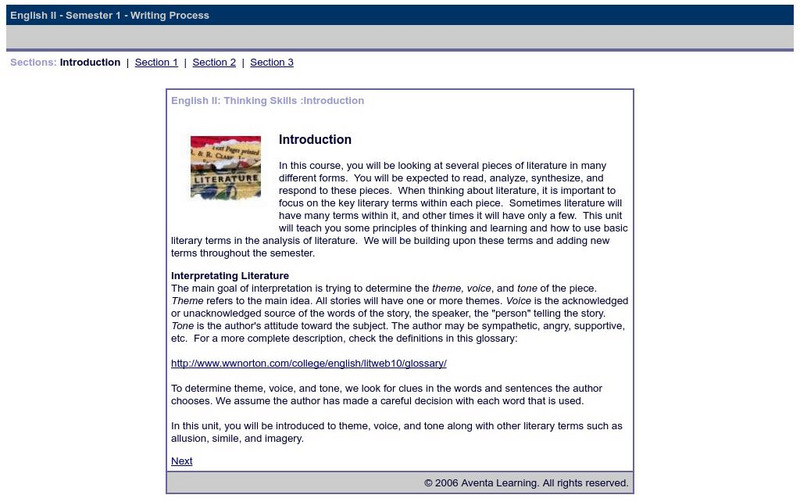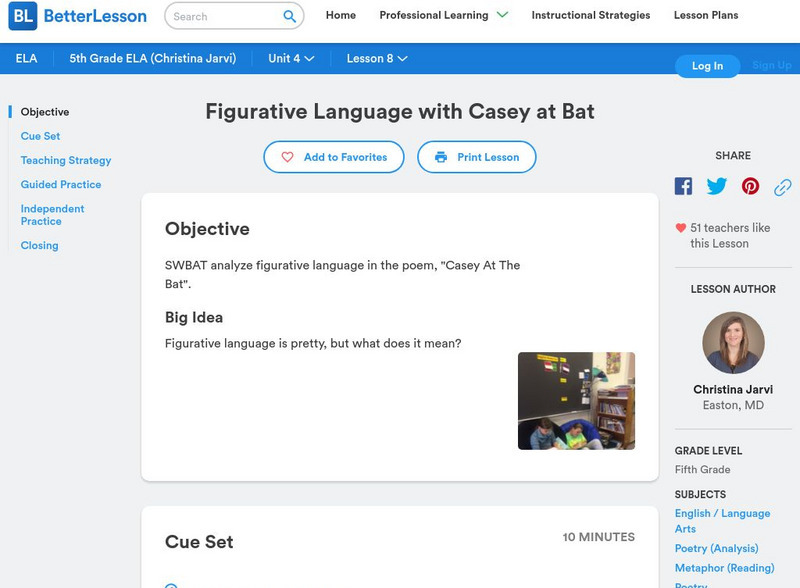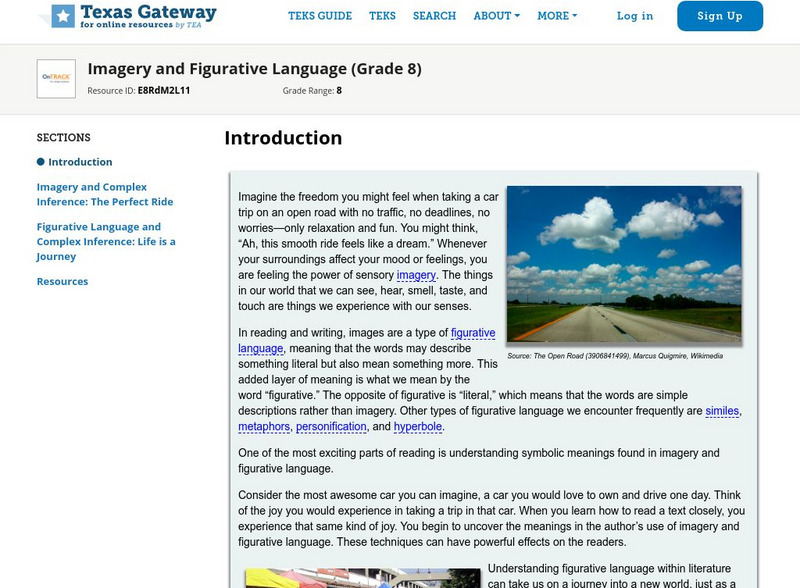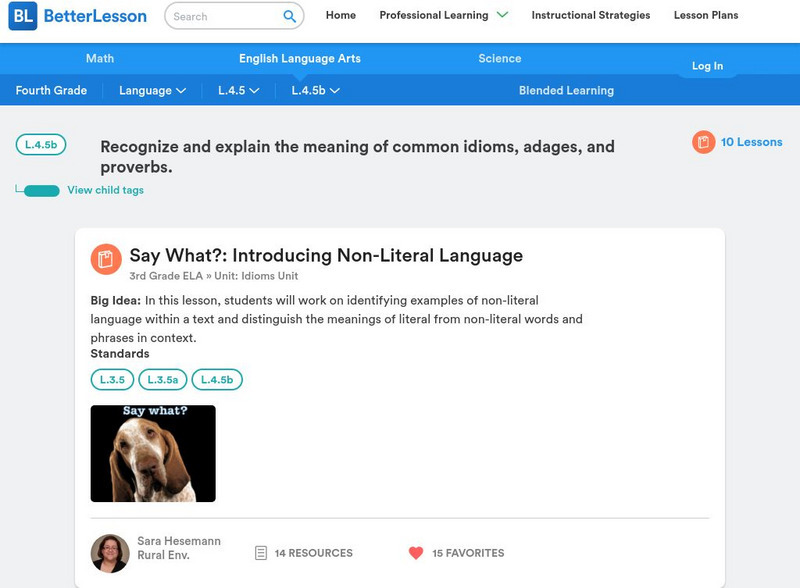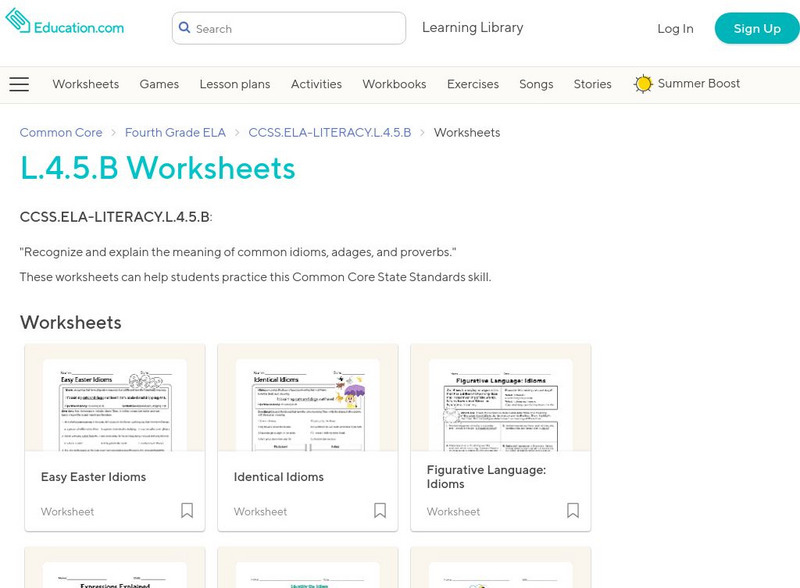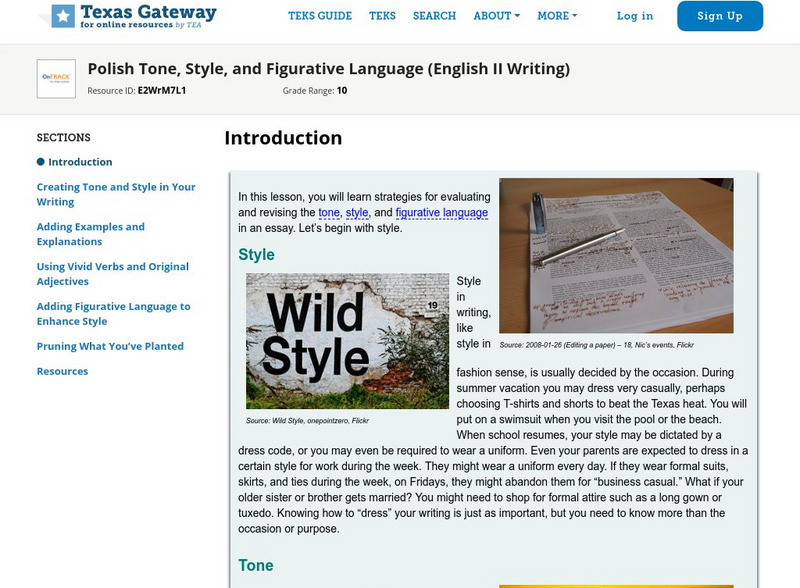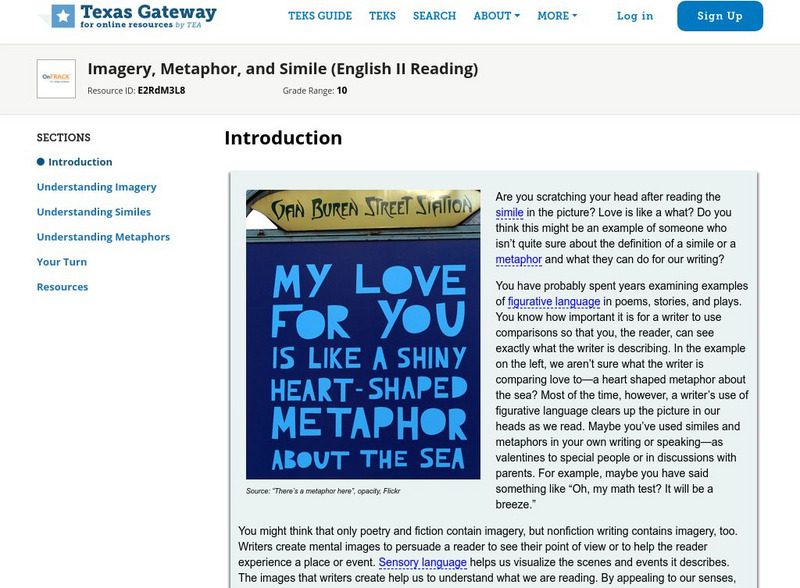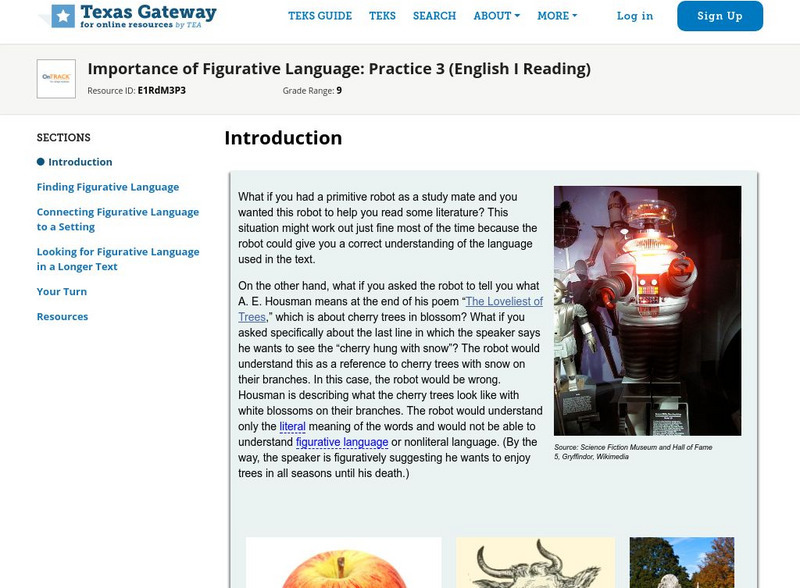Department of Defense
Do Dea: Thinking Skills
In this self-guided course, you will be looking at several pieces of literature in many different forms. This unit will teach you some principles of thinking and learning and how to use basic literary terms in the analysis of literature....
Better Lesson
Better Lesson: Unit: Figurative Language With Casey at Bat
In this lesson, 5th graders learn how to analyze figurative language in the poem, "Casey At The Bat."
McGraw Hill
Mc Graw Hill: How to Use Strategies to Teach Students to Access Complex Texts
In this short video, the strategies of summarizing, clarifying, and asking-answering questions are used. These instructional tools will help teachers show students how to access complex texts. [5:54] CCSS.ELA-Literacy.CCRA.R.10
Better Lesson
Better Lesson: L.3.5a: Distinguish Literal and Nonliteral Meanings of Words
Links to 18 lessons and activities that build student skills in standard L.3.5a: Distinguish the literal and nonliteral meanings of words and phrases in context (e.g., take steps).
McGraw Hill
Mc Graw Hill: Vocabulary Acquisition and Use: Understand Figurative Language
Explains what similes and metaphors are and how they are alike and different. Provides examples and practice sheets for each.
Texas Education Agency
Texas Gateway: Imagery and Figurative Language
In this lesson, you will learn how to make complex inferences and use textual evidence such as imagery and figurative language to support understanding.
Better Lesson
Better Lesson: L.4.5b: Recognize Meanings of Idioms, Adages, Proverbs
Links to 10 lessons and activities that build student skills in standard L.4.5b: Recognize and explain the meaning of common idioms, adages, and proverbs.
Education.com
Education.com: L.4.5.b Worksheets: Recognize Meanings of Idioms, Adages, Proverbs
[Free Registration/Login Required] A site with links to 10 worksheets that can be downloaded and printed for student use while building skills with standard L.4.5.B: Recognize and explain the meaning of common idioms, adages, and proverbs.
Texas Education Agency
Texas Gateway: Polish Tone, Style, and Figurative Language
[Accessible by TX Educators. Free Registration/Login Required] In this lesson, you will learn strategies for evaluating and revising the tone, style, and figurative language in an essay. It also includes practice exercises.
Texas Education Agency
Texas Gateway: Literary Text: Close Reading of Poetry: Practice 3
This lesson will help you comprehend the poet's meaning by giving you practice in finding imagery, metaphors, symbolism, and allusions.
Texas Education Agency
Texas Gateway: Literary Text: Imagery, Metaphor, and Simile
Writers use sensory imagery ("smelled the salty air"), similes ("like a strong man playing tug-of-war"), and metaphors ("the waves roaring in my ears") to capture the reader's imagination. In this lesson, you will learn how to identify...
Quia
Quia: Figurative Language Quiz
This 30-question quiz asks students to answer questions about figurative language by selecting the correct answer. Feedback is provided after the quiz is submitted. Java is required.
New Zealand Ministry of Education
Nz Ministry of Education: Playing Around With Poetry
Young scholars listen to and read various texts using figurative language including a ballad, poetry (Haiku, Cinquain, Limmerick) and rap music. They discuss language, meaning and ideas in a range of texts, relating their understanding...
Texas Education Agency
Texas Gateway: Importance of Figurative Language: Practice 3 (English I Reading)
[Accessible by TX Educators. Free Registration/Login Required] In this lesson, you will sharpen your skill in reading figurative language and in connecting it with the historical and cultural settings in the text.
National Endowment for the Humanities
Neh: Edsit Ement: Poems of Tennyson and Noyes: Pictures in Words
This is a great and informative site. This lesson plan uses Tennyson's "The Charge of the Light Brigade" and Noyes's "The Highwayman" to teach vivid imagery and figurative language. Don't miss out.
ArtsNow
Arts Now Learning: Moon Phaser [Pdf]
For this activity, 4th graders will study the moon for a period of one month and learn to identify each major moon phase. They will then describe the moon through poems, haikus, and similes.
CommonLit
Common Lit: Book Pairings: "Sahara Special" by Esme Raji Codell
Selected (8) reading passages (grades 5-8) to pair with "Sahara Special" by Esme Raji Codell. Sahara Special is the story of Sahara Jones's 5th grade school year and the struggles she overcomes to make friends and reach her potential as...
abcteach
Abcteach: Similes [Pdf]
This printable worksheet tutorial tests your knowledge of writing snow similes.
Other
Short Story Elements
Geared toward high school students, this site contains many notes and links on the aspects of short story, figurative language, and figures of speech.
Other
Fu Jen Univ.: Poetic Elements: Denotation and Connotation: Figures of Speech
This site gives short definitions of the terms denotation and connotation. Also gives definitions for many figures of speech. Finally, includes discussion and study questions for a few poems at the bottom of the page. L.11-12.5b Nuance
TED Talks
Ted: Ted Ed: The Art of the Metaphor
How do metaphors help us better understand the world? What makes a good metaphor? Explore these questions in this video with writers like Langston Hughes and Carl Sandburg, who have mastered the art of bringing a scene or emotion to...
Alabama Learning Exchange
Alex: Plath, Personification, and Figurative Language
This project based activity will use Sylvia Plath's poem, "Mirror", to examine the use of personification and figurative language. The activity may also incorporate the use of technology to produce a multimedia project. This allows...
Alabama Learning Exchange
Alex: Poetry and Music Fun With Chris Daughtry
This language arts lesson grabs students' attention by incorporating a popular musician. The lyrics to "Over You" include vivid language that makes identifying figures of speech intriguing. The students will identify similes, metaphors,...
Alabama Learning Exchange
Alex: Figurative Language
This lesson used a slideshow presentation to explain the difference between similes and metaphors. Students are challenged to identify these figurative elements in literature and then create some themselves.


